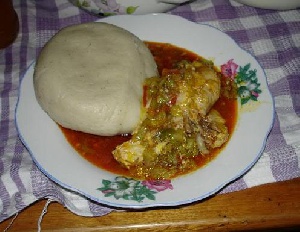In a surprising move the Ghana Ministry of Food and Agriculture (MOFA) rejected the recently released statement by Food Security Ghana (FSG) that food prices in Ghana rocketed by an average of 73% between October 2011 and March 2013.
Further initial analyses by FSG based on figures released by MOFA on their website indeed confirms that the Food Basket Price Barometer issued by FSG might even be an understatement.
Weekly Wholesale Food Prices as published by MOFA for Accra in fact increased on average by 80% between October 2011 and March 2013.
The items that led the increases included Tomatoes (318%), Cassava (240%), Onion (109%), White Yam (82%) and Local Rice (68%).
These food prices as quoted above is monitored by MOFA on a weekly basis and statistical evidence is available on the MOFA website for prices from January 2010.
In his rejection of the FSG report Mr. Kofi Humado, the Minister in charge of MOFA, “challenged Food Security Ghana to explain the variance in prices between the raw food and prepared food, since the report only centred on the latter.
He said that, “They should explain what caused the difference between raw produce and prepared food”.
The initial analysis above is in fact part of this “explanation”. The prices as measured and reported by MOFA are wholesale prices and therefore not prices of “prepared foods”. If prices of “raw produce” escalates on average by 80% then the Food Basket Price Barometer results should surely not be a surprise to MOFA?
It is also surprising that Mr. Humado challenges FSG to “explain” rather than saying that they will launch an internal investigation into the situation.
Within the database of information gathered by the Government of Ghana (GOG) there is knowledge that should inspire the quest for wisdom. It is not for independent initiatives such as FSG to do that on behalf of the GOG.
Although not food related a perfect example is what happened during the major energy crisis in Ghana under the NPP rule. When the crisis exploded and Parliament asked for an explanation from the then government it was justified by the fact that Akosombo Dam “suddenly” dried up.
In the meantime the levels of the dam was, and still is, monitored on a daily basis and reported to the sector Ministry. Simple statistical analysis based on historical and current data in fact warned the then government of the pending crisis but no - the dam “suddenly” dried up.
The same situation is currently experienced within Ghana’s MOFA - a wealth of information gathered by the officials without intelligence being added to it.
In its challenge to FSG Mr. Humado asked that we should explain the increase in prices between “raw food and produced” food. Maybe Mr. Humado can explain the following to all Ghanaians based on data gathered and released by MOFA.
In the period October 2011 to March 2013 the wholesale price of Cassava increased by 240%. In the same period the retail price increased by 263%. How can this be explained by a massive and indeed frightening oversupply of Cassava in the country?
If the demand for Cassava in Ghana is only 39% of the production then prices should surely have fallen and fallen and fallen? Instead it climbed by 263%? These figures are also not FSG “manufactured” figures but taken from the MOFA website from their 2010 -11 Ghana Food Balance Sheet.
It looks as if this food price shock is only the tip of an iceberg of revelations to come about the way politicians are managing the food security of Ghanaians and indeed the well-being of Ghanaians.
FSG has not once but many, many times questioned the basis of statistics that the GOG use to formulate policies and plans. These doubts about the accuracy and correctness of information have on more than one occasions been acknowledged by the GOG.
How can any organisation strategise, plan and allocate resources based on useless and incorrect information?
The difference, it seems, is that politicians do not care because they are working not working with their own money. Any private enterprise that practises such follies would have been living in the gutters a long time ago.
What is more amazing is that the GOG of have not made an attempt to get to the bottom line of the horrendous food price increases over the past 18 months. Is it due to increased prices of inputs to food production in Ghana? Is it due to extremely low productivity of Ghana’s agriculture? Is it due to ????
The increases quoted by FSG above is based on wholesale food price increases in Accra over the period October 2011 to March 2013 as reported by MOFA. Prices obviously varies from area to area and the impact on individuals will also vary depending on their personally preferred food basket. A lot more wisdom need to be added to the data available and FSG is committed to do just that in support of a food secure Ghana.
As some food for thought FSG challenges MOFA to explain the fact that there has been a 240% to 260% increase in the price of Cassava while the supply is 60% more than the demand? Also, why is there a 55% difference between the wholesale and retail prices of Cassava in Accra Ghana?
Business News of Thursday, 11 April 2013
Source: peacefmonline

















